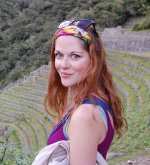Regardless of whether you’re a high school student, a university undergraduate or a family, planning an Alternative Spring Break (ASB) is the perfect opportunity to escape from the predictable trap of the all-inclusive vacation.
1. Choose your own adventure.
The brilliant thing about ASBs is that unlike all-inclusive vacations at cookie-cutter resorts, you can plan a completely unique and unforgettable week-long experience. Regardless of whether you’re coming from a high school, a university faculty or a community sports league, there are countless options available.
While many opt to use their time contributing to a volunteer project, ASBs can take on nearly any form that you can dream up. In addition to volunteering, you can use the week to develop cross-cultural understanding, learn a new skill, build teamwork—or even a combination of any of the above.
2. Hire an organization.
Instead of trying to plan activities, book accommodations and coordinate other logistics for your group, choose an experienced organization or company to take care of the details. (In the case of volunteer ASBs, this is particularly important in order to ensure that local partners and communities have buy-in in the project’s activities and outcomes.)
Many organizations offer programs designed specifically for ASBers, while others will build a tailored experience upon request. If you choose to go the latter route, get quotes from at least three organizations before you commit. Ideally, these quotes should include all costs per participant, a detailed explanation of what they will provide (including pre and post-trip support), and a proposed day-by-day itinerary.
3. Recruit a team leader or an appropriate academic advisor.
Organizations typically prefer to have one main point of contact within a group. Electing an appropriate team leader or group liaison will prevent the duplication of work, aid in ensuring that relevant information reaches all group members, and reduce overall confusion.
Similarly, although tour groups or organizations will often provide on-site support staff, groups should consider recruiting an academic advisor. Ideally, this advisor should support pre-project preparation (including fundraising), aid in cross-cultural communication and be comfortable making decisions in emergency situations.
4. Apply for course credit.
The price of ASBs range dependant on destination, proposed activities and the organization you’re working with. If the costs seem prohibitive, investigate applying for course credit for your experience. This will make the expense even more worthwhile.
Be prepared to coordinate with your selected academic advisor and make sure they’re willing to support your team members in obtaining credit. Often this includes writing a paper or completing a project upon your return.
5. Build realistic expectations.
If you do decide to volunteer overseas during your ASB, ensure that your team has a realistic idea of what they will accomplish. Despite your best intentions, it can be difficult to make valuable contributions to the development of a community in as little as one week.
Try to choose an organization that will build your team’s project into a larger workplan. That way, you can rest assured knowing that although it’s unlikely you’ll see the program from start to finish, your contributions will fit into a larger development framework and support a long-term goals.
Ideas to Get Started
Not sure what you want your Alternative Spring Break to look like? In addition to researching the opportunities that outdoor education centres, sports facilities and museums offer, check out the follow organizations, all of which offer unique pre-planned ASBs:
Canadian Roots Exchange: Although Canadian Roots now offers programs year-round, ASBs is where they got their start. During their February program, Aboriginal and non-Aboriginal students visit native communities with the goal of opening a dialogue, building relationships and educating youth about First Nations, Metis and Inuit communities. Previous spring breakers have been able to learn from survivors of residential schools, visit birthing centres and attend sessions with addictions counselors.
Operation Groundswell: OG’s Alternative Spring Breaks combine volunteering, education and sight-seeing. Their 2012 ASB “‘Fair’ Trade in Guatemala” itinerary includes two days volunteering with an agricultural cooperative, touring a mine, meeting with activists and climbing a volcano. It’s enough to make your peers in Punta Cana very, very jealous.
Cross-Cultural Solutions: CCS’ Insights’ Abroad program is perfect for the spring breaker. Participants choose their country and start date and are placed according to community needs. The one-week volunteer placements also allow for plenty of free time to explore your new surroundings.
Add this article to your reading list


